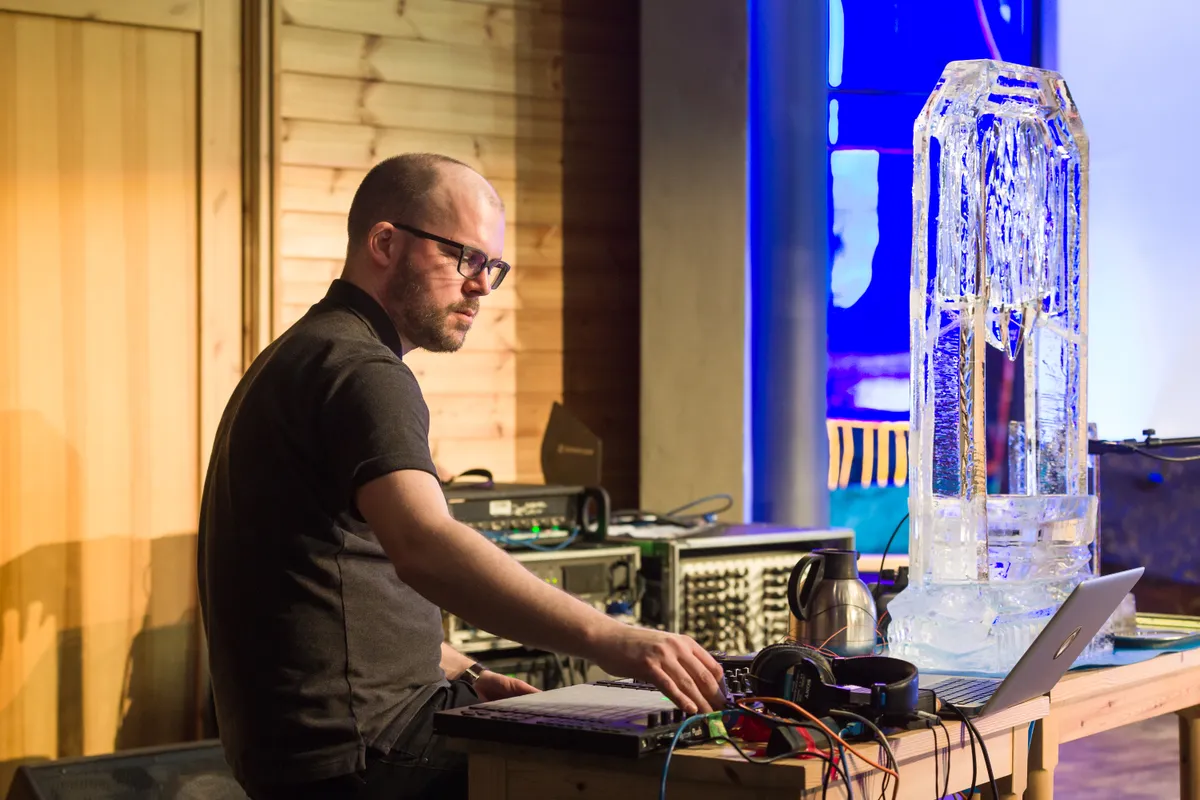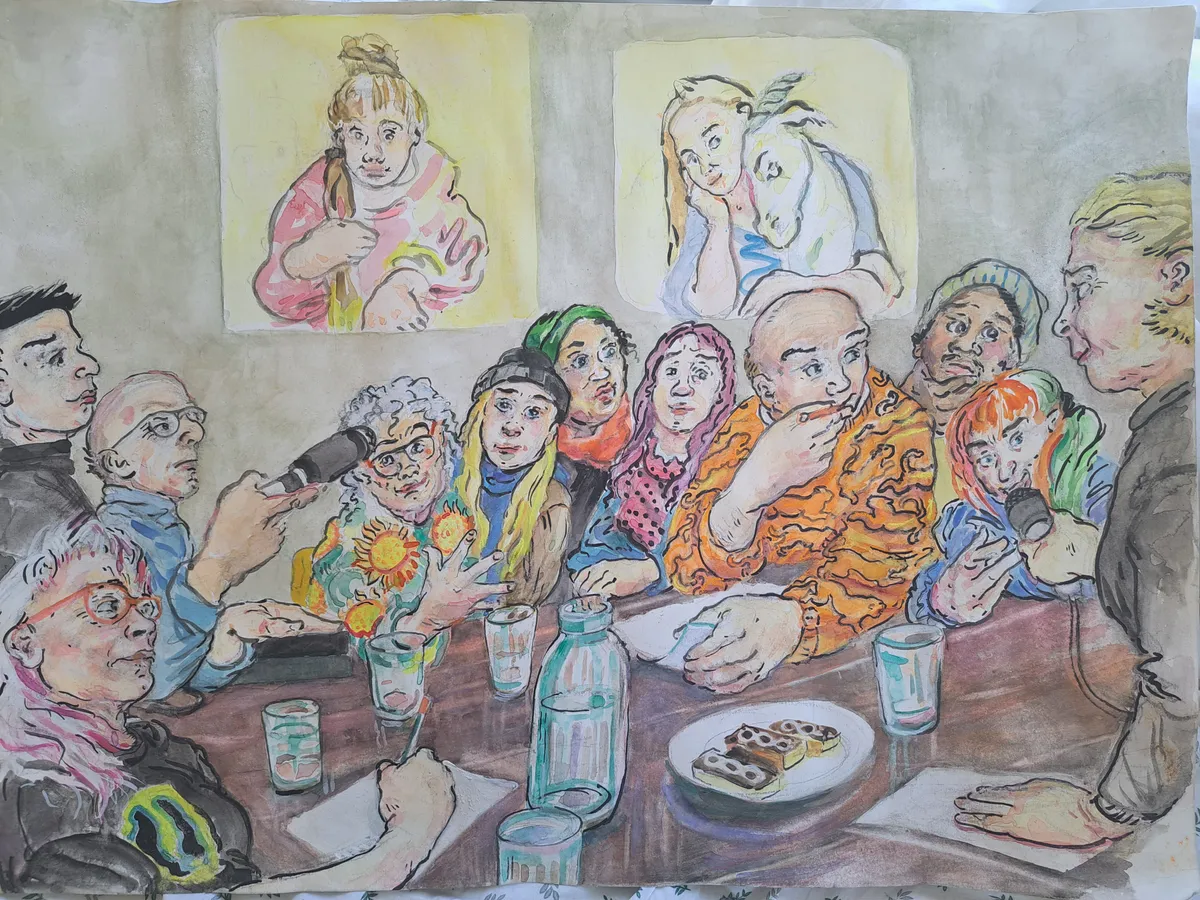Music is a key part of the balance of the mind and may be one of the greatest healing factors for our stressed-out brains and minds. But before we look at mental wellbeing, and moreover the health of our brain and the part that music may play, we must look at the evolutionary evidence which places music centrally in the development of our human brain. Why does the brain respond to music and why might music be good for our mental health and wellbeing?
Why do humans respond emotionally to music and why do we enjoy it?
Some 40,000 years ago, across the frozen landscape of central Europe, hunting parties of early (‘Cro-Magnon’) humans relentlessly pursued their prey – mobile herds of deer and wild boar. Those hunters faced formidable challenges. Emigrating out of the Middle East, they encountered brutal winters and the hard going of huge, endless forests.
'These early humans brought their technologies, their inventiveness... and their music'
But these early humans brought with them their technologies and their inventiveness which, against the odds, quickly established their presence. And they also brought music.
In 2009, in a remote cave in south-west Germany, buried in a Palaeolithic midden heap, scientists discovered the oldest known musical instruments – four flutes, ingeniously made to generate tonal differences. One, made of a vulture wing bone, is about a foot long. For deeper tone, others were made from the ivory of mammoth tusks.
These early musicians clearly had leisure time not only to play and create cave art but to make instruments. Scientists have little doubt that music is so basic to human nature that it goes back to our earliest days as a species. A virtuous cycle involving diet, culture, technology, social relationships and genes led to the modern human brain coming into existence by about 200,000 years ago. And the rest is history – music became embedded in our brains.
From the earliest choral music in ancient Egypt to the Classical and Romantic symphonies of the 18th and 19th centuries, we see in all cultures and eras the importance of music. Greek philosophers contemplated the healing effects of music – the art of the Muses (including Calliope, above left), the nine daughters of Zeus, king of the gods, and Mnemosyne, Titan goddess of memory.
Music as communication
We need little investigation to tell us that music is enjoyed by people of all ages around the world. In the words of Longfellow, ‘Music is the universal language of mankind.’ So, we can unite to share stories through music. Communication is so integral to our mental health, so too is music.
We don’t need to be scientists to know that music engages us physically and emotionally. The right song might prompt us to tap our toes or snap our fingers. It might inspire us to hum or sing or get up and dance. And the profoundest symphony can deeply inspire us. Music can spark memories from many years in the past – bringing back sights, smells and feelings from when we first heard the song that is now radiating throughout the room.
What does the brain need to be healthy?
First, we must define what the brain needs in order to thrive and be healthy. Over 1.5 million years, evolution has contrived three vital brain functions to work together seamlessly: executive function, or our ability to think and reason; social cognition, which enables us to interact successfully with others; and emotion regulation, through which we generate our sense of mental health and wellbeing.
How can music help support brain health?
As a member of the expert music group convened in 2020 by the Global Council for Brain Health, among the many issues discussed I was struck particularly by two of them. The first was that music is unique in simultaneously engaging more areas of the brain than any other activity of daily life.
The regions include those parts of the brain involved in hearing and listening, movement, attention, language, emotion, memory and thinking skills and, uniquely, all four lobes of the cerebral hemispheres and the brain stem. Music not only engages multiple parts of the brain but helps them work together. Playing and listening, the members concluded, is indisputably a powerful way to stimulate your brain and gives the brain a total workout, thus supporting your mental health.
Secondly, the neuroscientists in the meeting repeatedly said that they weren’t able to answer with certainty the many claims that are made about music and the brain because of the absence of a critical mass of scientific research. But there are many things we can say with certainty.
Is music important in helping mental wellbeing?
Yes, music is important in promoting mental wellbeing, a keystone of brain health requiring as it does the balancing of powerful negative and positive emotions. In general, the positive effect of music is a result of its impact on mood and arousal, and the listener’s enjoyment. By mood, we mean long-lasting emotions. By arousal, we mean the level of physiological activation – the key to regulating consciousness, attention, alertness and information processing.
The emotional impact of music seems to be determined by its tempo and the mode (key). Fast tempo and major mode music tend to evoke a positive/happy mood and higher arousal levels, whereas slow tempo and minor mode music evoke a more negative/sad mood and lower arousal levels.
We need no better example of the uplifting effects of music than Mstislav Rostropovich’s cello recital as the Berlin Wall came crashing down in 1989. Enhanced mood and arousal levels plus listener enjoyment all lead indirectly to improved cognitive function, particularly memory and learning. Interestingly, background music appears to have a different effect than listening directly to music – the so-called the ‘Mozart Effect’.

Why is dancing good for your brain health?
Dancing also provides an indirect way in which music leads to better brain health – and, as a result, your mental health. In scientific studies, dancers themselves report multiple cognitive benefits of their activity. Moreover, an astonishing study in 2003 at the Albert Einstein College of Medicine showed that of many different types of physical activities, only dancing was associated with a reduced risk of dementia.
Another study, this time in Germany, gave us a clue as to how: dancing was associated with increased hippocampal volume (the hippocampus being a centre of memory and learning). It also led aided the production of a brain protein, BDNF, which stimulates the growth of new brain cells.
Does music help stave off dementia?
So, the $64,000 question. If, say, cellist Yo-Yo Ma and guitarist Sharon Isbin (who we named as one of the best female guitarists of all time) live to be 100, will their musical training help them fend off the depredations of dementia? An overall review of the evidence makes clear that music is very powerful in improving mental health and wellbeing.
But a great deal of work is needed to understand fully some fundamental issues, such as whether music promotes memory and thinking skills as we age and whether listening to or performing music protects the brain against cognitive decline. For example, we know that playing a musical instrument uses many different cognitive skills, such as attention and memory, but we don’t know whether continually exercising those skills maintains them in later age.
There is also some evidence that playing an instrument throughout life is associated with a lower risk of dementia, but we don’t know whether performing music actually causes the brain to be more resilient to disease. And we don’t know whether the evidence that resilience observed in the brains of musicians is only true for people playing since childhood, or whether it applies equally to musicians who begin as adults.
What is the future of music and mental health?
Positively, we know that listening to music stimulates many parts of the brain; that music promotes brain connectivity and has much therapeutic value for healthy ageing, for pathologies such as stroke, Parkinson’s and dementia, and for reducing stress and promoting wellbeing. The outstanding research questions need to be answered to provide proof of what we know intuitively about the importance and relevance of music in all aspects of life. Personally, I’m convinced that the power of music to restore, rejuvenate and regenerate the brain will become our new received wisdom.
Professor James Goodwin recently released Supercharge Your Brain: How to Maintain a Healthy Brain.
A brilliant example of the role of music in mental health
For one memorable project, composer Gawain Hewitt and BBC Radio 3 researcher-in-residence Sally Marlow led a series of musical workshops with people with mental health issues.
Here, in this article originally from May 2023, are some reflections from Sally Marlow on the workshop sessions, where she and Gawain helped participants to create music that reflected all the emotions involved in mental illness.
For the past nine months I’ve been the first researcher-in-residence at BBC Radio 3, alongside my more usual day job as Professor of Practice in the Public Understanding of Mental Health Research at King’s College London.
The aim of the residency was to build on my existing work examining relationships between music, the arts, mental health and mental illness, looking at these in new ways. One of the resulting projects was Scoring Mental Health, a programme for Radio 3’s Between the Ears slot.
How are mental health and mental illness portrayed in music?
The idea for the programme started with questioning how mental health and mental illness are portrayed musically. When you strip away lyrics, and think purely of instrumental music associated with mental illness, what’s the first thing that comes into your head?
For many of us it will be films - the high pitched strings of the shower scene in Psycho, for instance. Or The Shining, featuring Bartók’s otherworldly Music for Strings, Percussion and Celesta?
Or something more nuanced – the melancholic piano and muted discord of Mychael Danna’s score for Girl Interrupted? Or James Horner’s orchestral soundtrack for A Beautiful Mind, ranging from mournful to uplifting? Some of us might think of music by composers who were known to have mental illness – Beethoven, Rachmaninov or Berlioz perhaps.
- A guide to Beethoven's Heiligenstadt Testament and what drove him to write it
- Ivor Gurney: how the composer's life was plagued by mental illness
Whatever piece of music we think of, the chances are that it was composed primarily for reasons other than to represent mental illness. Film scores for films about mental health are generally intended to evoke some sort of emotional response in the listener (usually fear). And the great composers wrote for themselves, their audiences and their patrons within the confines of what was acceptable at the time.
'Music can convey feelings that can't be articulated'
We rarely, if ever, hear music composed by people (i.e. non-composers) with mental illness, whose express intention is to create a musical representation of their mental ill health, and its many facets.
Yet we know music can convey feelings which can’t be articulated, and one of the things people with severe mental illness often say is that they don’t have words to convey their experiences to others. Could music bridge that gap, and be a language to communicate aspects of mental ill health like distress, disconnectedness, monotony and lack of control?
An idea was hatched to bring together people with lived experience of mental illness and a composer, to see if something meaningful could be co-composed, with funding for the project provided by the Economic and Social Research Council.
In search of a very particular kind of composer
This wasn’t a project for just any composer, it had to be someone who understood how to work with people with lived experience of mental ill health. This included working with those who were severely unwell: it was important for the music to represent the full range of mental health.
I approached composer and sound artist Gawain Hewitt, whom I’d observed previously in the Bethlem and Maudsley Hospital Schools on a City of London Sinfonia project called Sound Young Minds. This is an award-winning music making programme for children and young people under the care of psychiatric hospitals. I’d seen Gawain run workshops for these young people, and knew his practice was respectful and inclusive, resulting in some beautiful music.
We sketched out what to do to make it happen, starting with a focus group to ask people with lived experience of mental illness what sorts of things any new compositions should consider. This would be followed by a series of music making workshops, in which those people would return, along with others, and work with Gawain to make music, all of which would be recorded.

Gawain would then take those recordings and use them as a basis to compose new music. Rather than having pre-determined ideas about format, the music would be informed by the process.
I presented the idea to Rami Tzabar, Creative Director of Audio at TellTale Industries, and along with producer Adrian Washbourne, we worked up a proposal for Matthew Dodd, Radio 3’s speech commissioner. He liked it. Scoring Mental Health was born, and Adrian started the process of capturing audio to record the process as well as the final music.
'The magic at those sessions was palpable'
The focus group was hosted by one of the research groups I work with, the Centre for Society and Mental Health, and around 20 people came in person and online, including people whose illnesses meant they joined us from their bedrooms, or came straight from the hospital wards, accompanied by a member of their care team. They gave us a really clear steer as to what we should include – and, armed with this, Gawain devised his music making workshops.
The magic at those sessions was palpable. We held two at King’s College London, one online, and a particularly lively one in conjunction with the Mental Fight Club at St James Garlickhythe in the City of London, nicknamed 'Wren's lantern' after its architect and owing to its profusion of windows. The symbolism was not lost on us.
Gawain brought with him musical instruments including percussion and a one-stringed cello made from an old banister. Plus, lest you think the process was purely low-fi, a variety of electronic devices loaded with music making apps he’d written himself.
Harnessing sounds of all types (groaning lifts welcome)
Participants in the workshops brought themselves, and their instruments if they had any and wished to do so (although no prior music making experience was necessary). Some brought anything they liked the sound of – a kitchen whisk was corralled into action, and the groaning of a lift outside the room became something of a leitmotif throughout two of the workshops.
The results are extraordinary. There is the music itself of course – Gawain crafted something beautiful, poignant, moving, and above all, authentic to people’s experiences.

The programme for Between the Ears was masterfully captured, produced and edited by Adrian, and mixed by his colleague Giles Aspen. I am incredibly proud to have been part of something so unique which audiences can now share.
'The result was a joy and a privilege'
The process, too, was a privilege, and if evidence were needed that music can communicate where words can not, that is apparent not only in the final pieces, but also present in the workshops and the process. As Mental Health Awareness Week begins, I can’t think of a better way to prepare for it than to listen to this programme.
Composer and producer Gawain Hewitt adds: 'The only way I could make this work with integrity was to try and still myself and listen throughout the process. To listen while people told me in words what they wanted to say. To make a safe space for everyone to make sound and music and listen to what they made. And to let the recordings lead my process of composition and music production.
'The result was a joy and a privilege – the work they made was surprising and honest, and as I made sense of what had been captured and put it all together the music revealed itself.'
Composing alongside Gawain were Michelle Baharier, Stephanie Bates, Lavinia Black, Rashima Black, Rick Burgess, Cruella Dot, Daisy, James Downs, Dorothy Dunn, Cameron Durdy, Tania Gergel, Barrington Gordon, Nicky Heinen, Sarah Hill, Cassie Lovelock, Tiffany Pitts, Sonia Thompson, and members of the Mental Fight Club.
Accompanied by Matt Maguire, sub principal viola, City of London Sinfonia
Illustration of focus group by Stephanie Bates





